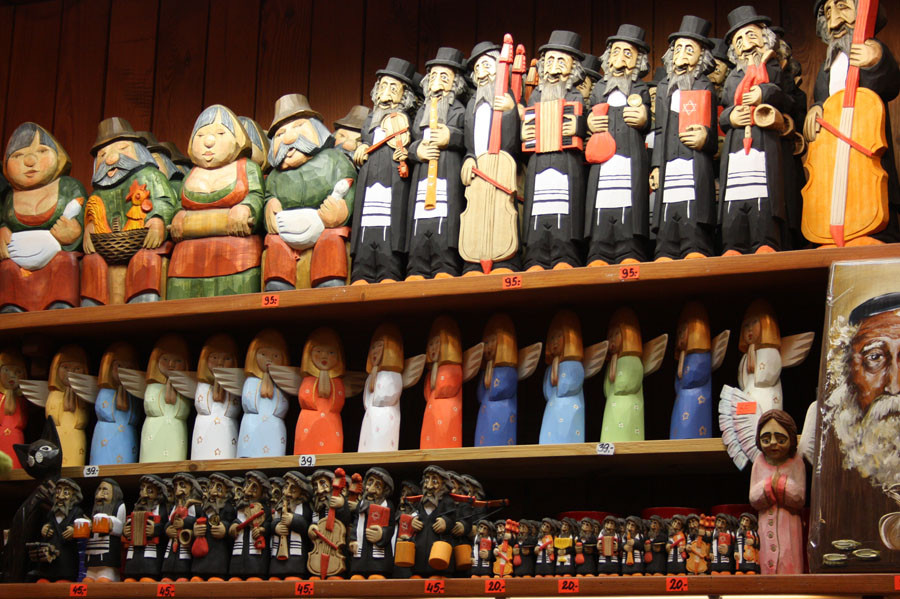Many of Poland’s
traditional arts are known around the world. One of the things that stands out
is their elaborately decorated Easter eggs. The eggs are painted with either complete
scenes or with complex geometric designs. Other eggs are drained and blown out
and are then carved with very complicated looking, delicate designs. Kudos to
the people who can do this without crushing the eggs. Some of them almost look
like lace.
Wood carving is also
a common thing here as well. And nothing made of wood is off limits for a
carver. Door frames, utensils, tools, sculptures, furniture, and whatever else
they can find are fair game. Be careful who you lend your knives to, I guess.
Paper cutting is
also an art form that gained popularity during the early 20th
century, only because colored paper wasn’t as readily available before then.
People, mostly women, would cut designs and folk pictures out of paper and
layer the colors. Although I bet they’re forever picking up tiny bits of scrap
paper off the floor.
Felt art is an artform
that’s making a comeback, apparently. I typically think of felt as in
ornaments, bags, gloves, and hats, but they also make necklaces, shoes,
blankets, and other things out of felt. Suddenly, I really need something felt.
Poland has a strong tradition in painting and other visual arts for a long time. Polish artists have kept up with the various artistic movements that were popular throughout Europe, yet adding their own flair to it. Some major names in the art world include Jan Matejko (military and political events), Jozef Chełmoński (Realism), Jacek Malczewski (Symbolism), Stanisław Wyspiański (Symbolism), Tadeusz Makowski (Cubism), Władysław Strzemiński (avant-garde, constructivism), and Henryk Stażewski (avant-garde, constructivism). Famous sculptors include Magdalena Abakanowicz, Katarzyna Kobro, Xawery Dunikowski, and Alina Szapocznikow.

by Jan Matejko -- I just saw this memed with a caption reading "ready for the holidays but still has finals."

Although most Polish literature is written in Polish, there are other writers who write in/have written in Belarusian, Ukrainian, Latin, Yiddish, Lithuanian, German, and even Esperanto (a constructed language created during the late 1800s by the Polish-Jewish ophthalmologist, L. L. Zamenhof). The earliest literary works did not come until after the spread of Christianity took hold. Most writings at this time were chiefly religious in nature.
As the Renaissance period developed, many foreign writers began to pour into Poland; the newly opened University of Kraków attracted many of the brightest minds all over Europe. Latin classics and poetry were viewed as the basis of a good education during the Baroque period, and as Poland entered the Enlightenment period, the country itself was heading in a downward spiral. Romanticism followed during the early part of the 1800s, which was largely built upon a sense of independence and nationalism. National poets became popular during this era.
 |
| I'm down with this. |
Related to the Romantic period is the period of Polish Positivism. It grew out of the failed uprising again the Russians in 1863, essentially pushing skepticism, reason, equal rights, and feminism. After WWI, new avant-garde styles developed out of the quickly changing climate of European culture and politics. However, most writers stopped writing freely during WWII. Many left for other countries; many of the ones who stayed were often involved in underground printing presses, reporting on resistance movements. When they were under Soviet control, all texts and literature were strictly censored. It wasn’t until after independence and into the transition to a democratic country did writers enjoy the freedom of the press again.

Wisława Szymborska






No comments:
Post a Comment